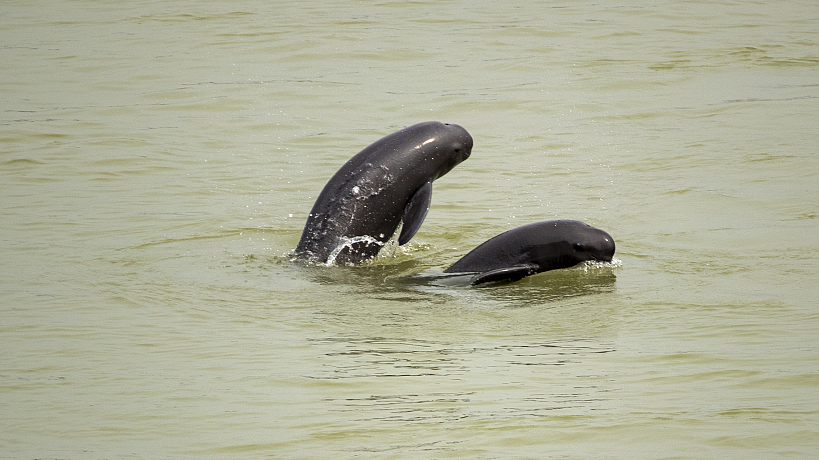
Newsroom
Yangtze Finless Porpoise's Adaptation to Environmental Temperature

Yangtze Finless Porpoises, Hubei Province. /VCG
Most tiny cetaceans in temperate and polar regions have a seasonal pattern in blubber thickness, the thick layer of fat under the skin, which may be an important adaptive mechanism in response to environmental temperature fluctuations.
Tang Bin and colleagues from the Key Laboratory of Aquatic Biodiversity and Conservation, Institute of Hydrobiology, Chinese Academy of Sciences are investigating how the blubber thickness of Yangtze Finless Porpoises in human care varies with water temperature. Their study was recently published in the journal Water Biology and Security.
According to their research, marine animals live in very thermally conductive aquatic habitats. As a result, maintaining core body temperature is more difficult for them than for terrestrial mammals. Blubber is the major thermal barrier for marine mammals, particularly cetaceans that lack fur or hair, and it is regarded as the only thermal barrier. As a result, cetaceans must keep their blubber thick enough to adapt to high heat conductivity aquatic settings.
By monitoring four Yangtze finless porpoises using ultrasound imaging technology, the scientists investigated the variation patterns of blubber thickness and their relationship to environmental temperature changes.
They found that blubber was not evenly distributed in the skin of the animals. Moreover, different body regions display different sensitivities to seasonal temperature changes.
The blubber thickness in the anal girth region exhibited noticeable seasonal changes. In contrast, the umbilical lateral and ventral regions showed relatively blunt seasonal changes, indicating different adaptive functions of the blubber in different regions, according to the study.
It has also revealed that the food intake of the Yangtze finless porpoises has a negative correlation with water temperature, which implies that there might be a mechanism of environmental temperature regulating blubber thickness by changing the appetite or food intake of the animals.
"This study elucidates the seasonal pattern of blubber thickness variation in small cetaceans and provides insight into adaptation mechanisms of small cetaceans to temperature changes," the study stated.